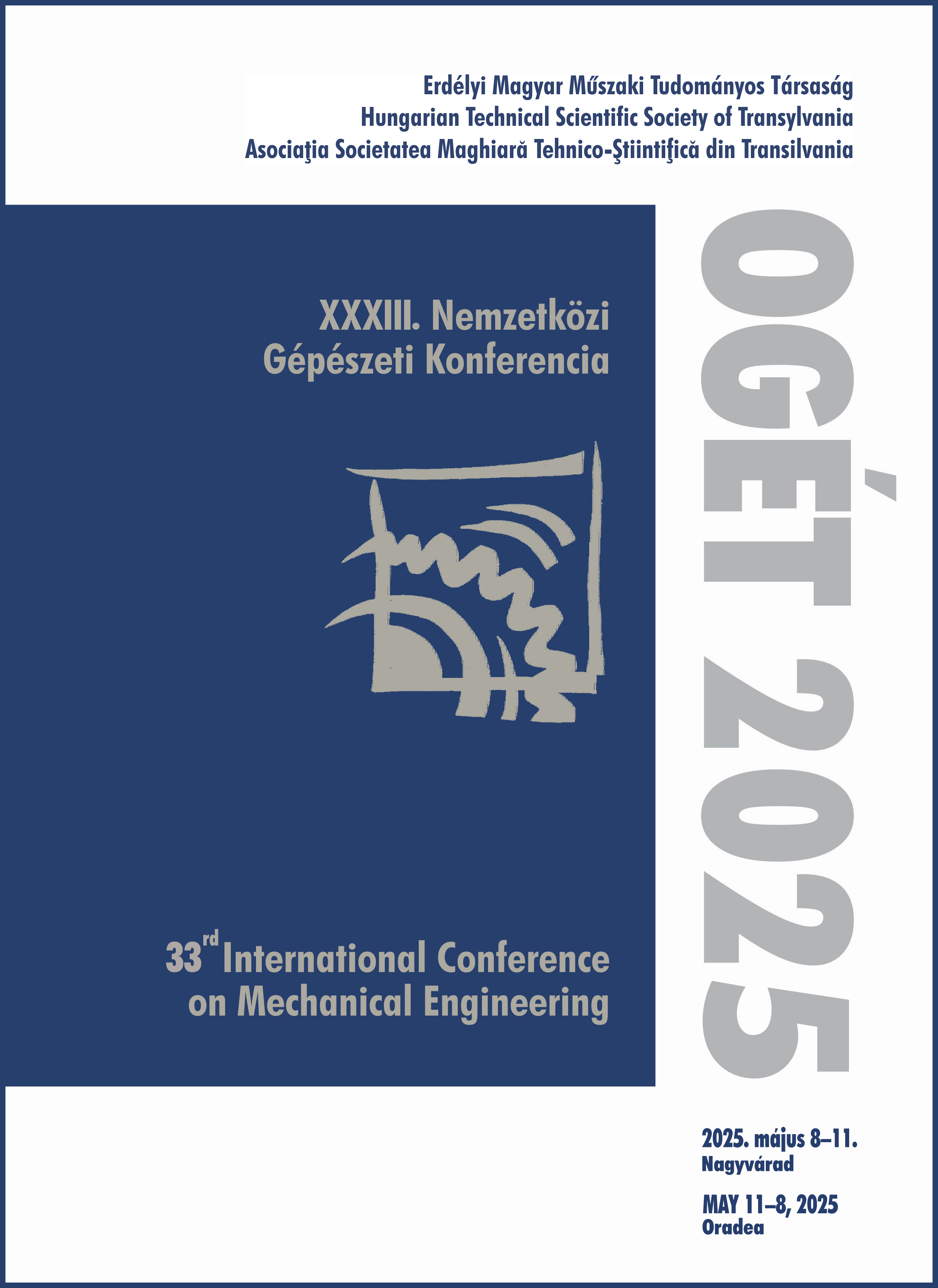3D-nyomtatott habok nyomtatásihőmérséklet-függő nemlineáris véges rugalmas-képlékeny modellezése
Printing-temperature-dependent nonlinear finite elastic-plastic modelling of 3D-printed foams
Keywords:
3D-printing, polymer foams, elastic-plastic deformations, constitutive modelling, parameter fitting, /, 3D-nyomtatás, polimer habok, konstitutív modellezés, rugalmas-képlékeny deformációk, paramé- terillesztésAbstract
Recent developments in the extrusion-based additive manufacturing technologies have enabled the cost-effective production of customised and small series products with complex geometries. Contributions has demonstrated that multilayer foam structures with different densities in each layer can be used to improve the shock absorption properties of products. The use of in-situ foaming filaments in 3D printing could provide a major breakthrough in the manufacturing technology of such sandwhich structures. In-situ foaming involves the use of materials where expansion occurs during the 3D printing process by varying the printing temperature. This method allows the creation of functionally layered foams with controlled porosity and graded density. In order to predict the mechanical behaviour of such density graded structures by numerical simulations, it is necessary to accurately model the polymer foam material printed at different temperatures and to describe the printing temperature dependence of the material parameters. The characteristic loading of 3D-printed foams is compression which exhibits finite strains and nonlinearly hardening deformations. This complex mechanical behaviour can be well modelled by the Deshpande-Fleck model developed for crushable foams. In our contribution an LW-PLA foaming 3D-printed filament is investigated via compression tests, while for the printing temperature-dependent material behaviour a parameter fitting procedure is proposed.
Kivonat
Az extrudáláson alapuló additív gyártási technológiák fejlődése lehetővé tette a bonyolult geometriájú, egyedi és kisszériás termékek költséghatékony gyártását. Korábbi kutatások igazolták, hogy a többrétegű, rétegenként eltérő sűrűségű habszerkezetek felhasználhatók a termékek ütéselnyelő képességének javítására. Az ilyen szerkezetek gyártástechnológiájában a 3D nyomtatás során in-situ habosodó szálak alkalmazása jelentős áttörést hozhat. Ez olyan anyagok használatát jelenti, ahol a habosodás a 3D nyomtatási folyamat során történik a nyomtatási hőmérséklet változtatásával. Ez a módszer lehetővé teszi a funkcionálisan rétegelt habok létrehozását kontrollált porozitással és változó sűrűségű rétegekkel. Annak érdekében, hogy numerikus szimulációk segítségével előre tudjuk jelezni a változó sűrűségű struktúrák mechanikai viselkedését, szükséges a különböző hőmérsékleten habosított polimer hab anyag pontos konstitutív modellezése és az anyagparaméterek nyomtatásihőmérséklet- függésének leírása. A 3D-nyomtatott habok jellemző terhelése nagy alakváltozásokkal járó összenyomás, amely véges rugalmas és nemlineárisan képlékeny deformációkkal is rendelkezik. Ezen komplex mechanikai viselkedés jól modellezhető a Deshpande-Fleck-féle roppanó hab modellel. Vizsgálataink során LW-PLA habosodó 3D-nyomtatott filament esetében végeztünk nyomóvizsgálatot és dolgoztunk ki paraméterillesztő eljárást a nyomtatásihőmérséklet-függő anyagi viselkedés leírására.
References
S. C. Altiparmak, V. A. Yardley, Z. Shi, J. Lin Extrusion-based additive manufacturing technologies: State of the art and future perspectives. Journal of Manufacturing Processes. Elsevier, 2022, 83, 607-636
M. Tomin, D. Török, T. Pászthy, Á. Kmetty Deformation analysis in impact testing of functionally graded foams by the image processing of high-speed camera recordings. Polymer Testing. Elsevier, 2023, 122, 108014
N. Gupta A functionally graded syntactic foam material for high energy absorption under compression. Materials Letters. Elsevier, 2007, 61(4-5), 979-982
Y. Shimazaki, S. Nozu, T. Inoue Shock-absorption properties of functionally graded EVA laminates for footwear design. Polymer Testing. Elsevier, 2016, 54, 98-103
K. Kalia, A. Ameli Additive manufacturing of functionally graded foams: Material extrusion process design, part design, and mechanical testing. Additive Manufacturing. Elsevier, 2024, 79, 103945
M. Tomin, N. Lukács, Sz. Berezvai Development of density-graded sandwich structures with in-situ foaming filaments in additive manufacturing. SPE FOAMS Conference. 2024, pp. 7.
L. J. Gibson, M. F. Ashby. Cellular solids: Structure and properties, Cambridge University Press, 1997.
N. J. Mills. Polymer Foams Handbook Engineering and Biomechanics Applications and Design Guide, Butterworth- Heinemann, 2007.
V. S. Deshpande, N. A. Fleck Isotropic Constitutive Model for Metallic Foams. Journal of the Mechanics and Physics of Solids. Elsevier, 2000, 48, 1253-1276
Dassault Systémes: Abaqus, 2022.
ANSYS Inc.: LS-Dyna, version: R14.0.0.


